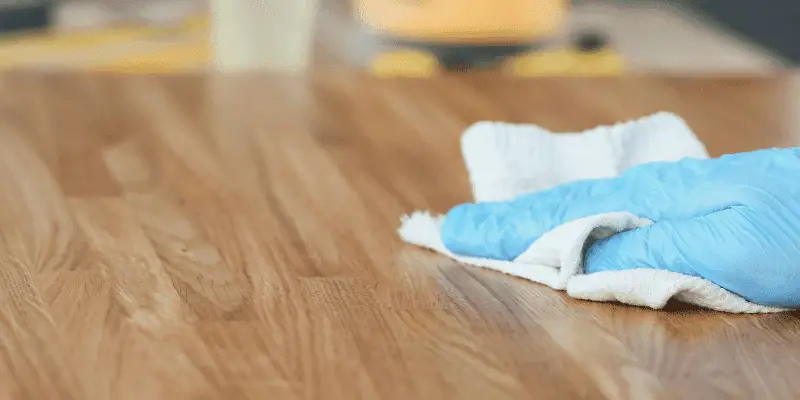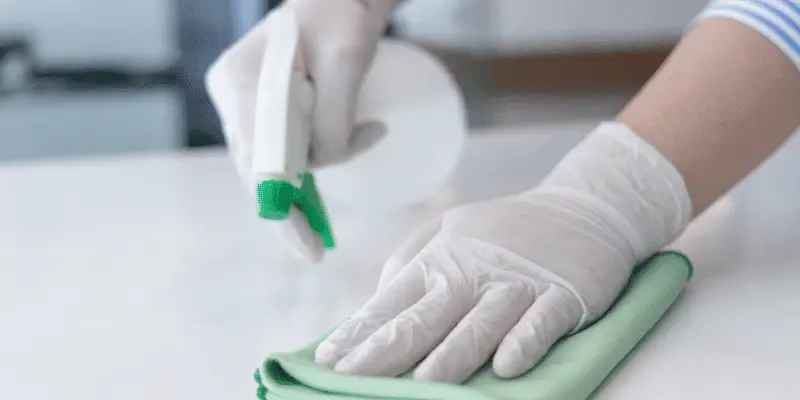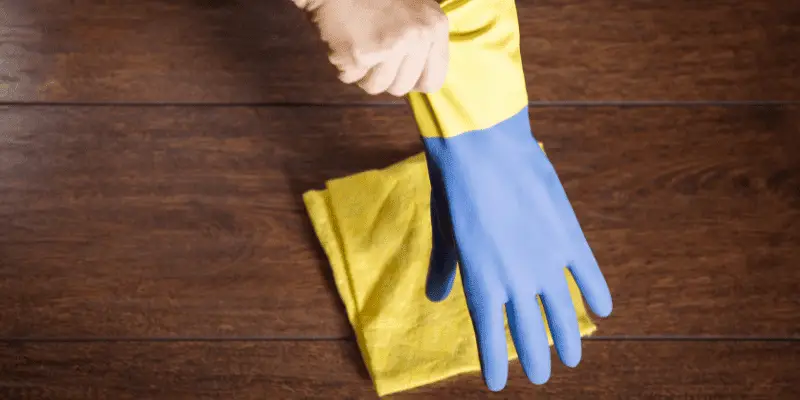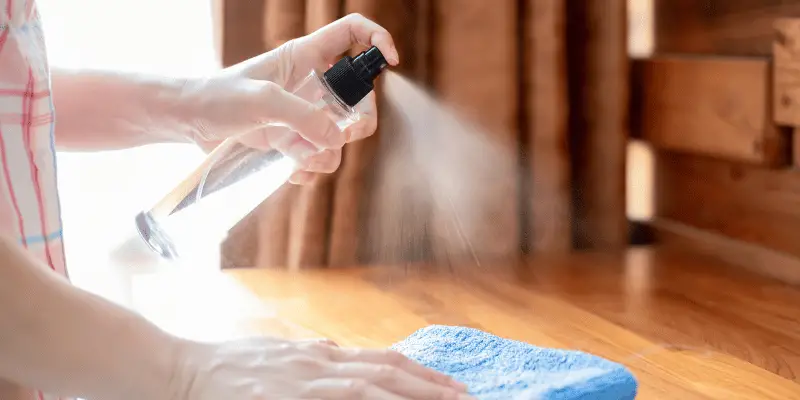To clean wood furniture, mix equal parts vinegar and water, then use a soft cloth to wipe down the piece. Additionally, you can use a mix of lemon juice and olive oil to polish and restore the shine of the wood.
Understanding Wood Furniture Cleaning
Wood furniture cleaning is essential for maintaining its beauty and longevity. With these effective tips, you can easily clean your wood furniture and keep it looking pristine without damaging the material.
Wood furniture adds warmth and elegance to any home decor. To maintain its beauty and extend its lifespan, regular cleaning is essential. Understanding the proper techniques and products for cleaning wood furniture is crucial to prevent damage and ensure its longevity.
In this section, we will discuss the types of wood furniture and their cleaning needs, the importance of regular cleaning for maintaining wood furniture, and common mistakes to avoid when cleaning.
Types Of Wood Furniture And Their Cleaning Needs:
- Hardwood furniture: Hardwood furniture, such as oak, cherry, or mahogany, requires gentle cleaning to avoid scratching or fading the finish.
- Softwood furniture: Softwood furniture, like pine or cedar, is more susceptible to damage and stains. It needs extra care, as it can absorb moisture easily.
- Veneer furniture: Veneer furniture has a thin layer of wood on top of another material, and it requires delicate cleaning to avoid peeling or lifting the veneer.
- Painted wood furniture: Painted wood furniture demands special attention to prevent the paint from chipping or fading. It’s vital to use non-abrasive cleaners specifically formulated for painted surfaces.
Importance Of Regular Cleaning For Maintaining Wood Furniture:
- Dust and dirt accumulation: Regular cleaning prevents the buildup of dust and dirt, which can lead to scratches and damage the finish.
- Preservation of the wood’s natural beauty: Cleaning helps maintain the wood’s natural color and texture, enhancing its overall appearance.
- Preventing pest infestation: Wood furniture can attract insects and pests if not properly cleaned. Regular cleaning helps eliminate any potential breeding grounds.
- Avoiding moisture damage: Cleaning prevents moisture from seeping into the wood and causing warping or rotting.
Common Mistakes To Avoid When Cleaning Wood Furniture:
- Using harsh chemicals: Avoid using harsh or abrasive cleaners that can strip the wood’s finish or damage its surface.
- Over-wetting: Excessive use of water or liquid cleaners can penetrate the wood, leading to swelling, warping, or discoloration.
- Using rough materials: Avoid using rough rags, scrub brushes, or abrasive materials that can scratch or damage the wood surface.
- Neglecting to dust regularly: Neglecting to dust wood furniture regularly can lead to the accumulation of debris, causing scratches and dullness.
- Failing to test new products: Before using any new cleaning product on wood furniture, always perform a patch test on an inconspicuous area to ensure it doesn’t cause any damage.
Proper understanding of the various types of wood furniture and their specific cleaning needs, along with the importance of regular cleaning and avoiding common mistakes, is essential in preserving your wood furniture’s beauty and longevity. By following these guidelines, you can keep your wood furniture looking stunning for years to come.
Essential Tools And Materials For Cleaning Wood Furniture
Discover the must-have tools and materials for effectively cleaning your wood furniture. Maintain its beauty and longevity with these essential items.
Wood furniture adds warmth and elegance to any space. To maintain its beauty and prolong its lifespan, regular cleaning is essential. Having the right tools and materials at hand ensures that you can properly care for your wood furniture. Here are the essential items you’ll need:
- Soft, lint-free cloths: These are indispensable for dusting and cleaning delicate wood surfaces without leaving scratches or lint behind.
- Microfiber dusters: Perfect for reaching intricate crevices and hard-to-reach areas, microfiber dusters trap dust effectively without the need for harsh chemicals.
- Gentle wood cleaning solutions: Opt for commercially available wood cleaners specifically formulated for furniture. These solutions remove dirt and grime without causing damage or stripping the wood of its natural oils.
- Homemade alternatives: If you prefer a DIY approach, consider using mild soap mixed with water. Be sure to test the solution on an inconspicuous area before applying it to the entire piece.
- Natural oils and waxes: To maintain the luster and protect the wood, use natural oils and waxes designed for wood furniture. These products nourish the wood and create a protective barrier against moisture and pollutants.
Remember, preserving the beauty of your wood furniture requires regular maintenance using the right tools and materials. By incorporating these essential items into your cleaning routine, you can ensure your wood furniture remains stunning for years to come.

Step-By-Step Guide To Cleaning Wood Furniture
This step-by-step guide provides easy-to-follow instructions for effectively cleaning wood furniture. Discover the best methods to maintain and enhance the beauty of your wooden pieces without causing any damage.
Wood furniture adds warmth and elegance to any space, but keeping it clean and well-maintained is essential to preserve its beauty and extend its lifespan. In this step-by-step guide, we’ll explore the best practices for cleaning and caring for your wood furniture, from preparing the furniture for cleaning to polishing and restoring its natural shine.
Preparing The Furniture Before Cleaning
Before you start cleaning your wood furniture, it’s important to prepare it properly. Here’s what you need to do:
- Remove any items, such as decorative objects or tableware, from the furniture surface.
- Dust the furniture using a soft cloth or a feather duster to remove loose debris and particles.
- If there are any stubborn dirt or stains, consider using a vacuum cleaner with a brush attachment to gently remove them.
Removing Dust And Debris
Regular dusting is essential to maintain the pristine condition of your wood furniture. Here’s how you can effectively remove dust and debris:
- Use a clean, dry microfiber cloth to wipe the furniture surface gently.
- For intricate detailing or hard-to-reach areas, use a soft-bristled brush to loosen the dust before wiping it away.
- Avoid using feather dusters as they can spread the dust around and scratch the wood surface.
Checking For Any Damages Or Stains
Before proceeding with the cleaning process, it’s crucial to check your wood furniture for any damages or stains that may require special attention. Follow these steps:
- Inspect the furniture for any scratches, dents, or cracks. If you notice any significant damage, consider consulting a professional for repairs.
- Examine the furniture surface for stains or discoloration. This step will help you determine the appropriate cleaning method and products to use.
Cleaning Different Types Of Wood Furniture
Different types of wood furniture may require specific cleaning techniques to ensure optimal results. Let’s explore how to clean two common types:
Cleaning Solid Wood Furniture
Solid wood furniture is durable and typically requires minimal maintenance. To clean solid wood furniture:
- Dilute a mild dish soap in warm water.
- Dip a soft cloth or sponge into the soapy water and wring out any excess moisture.
- Gently wipe the furniture surface following the wood grain.
- Dry the furniture thoroughly with a clean cloth.

Cleaning Veneer Or Laminate Wood Furniture
Veneer or laminate wood furniture is more delicate and requires extra care to prevent damage. Follow these steps for cleaning veneer or laminate wood furniture:
- Combine equal parts of vinegar and water in a spray bottle.
- Mist the mixture onto a soft cloth or microfiber cloth.
- Gently wipe the furniture surface, paying attention to any stains or spots.
- Dry the furniture using a clean, dry cloth.
Removing Stains And Spots From Wood Furniture
Stains and spots can be a common issue with wood furniture. Here’s how to tackle different types of stains:
Water-Based Stains
- Blot the stain gently with a clean cloth or paper towel to absorb any excess liquid.
- Mix a small amount of dish soap with water.
- Dip a soft cloth or sponge into the soapy water and dab it onto the stain.
- Blot the area again with a clean cloth until the stain is lifted.
Oil-Based Stains
- Use a clean cloth or paper towel to blot the stain and absorb any excess oil.
- Sprinkle a small amount of baking soda directly onto the stain.
- Gently rub the baking soda into the stain using a soft cloth.
- Wipe away the baking soda residue with a clean cloth.
Ink Or Marker Stains
- Dampen a clean cloth with isopropyl alcohol.
- Gently blot the stain with the alcohol-dampened cloth, starting from the outer edges and working your way to the center.
- Continue blotting until the stain is removed.
Polishing And Restoring The Shine Of Wood Furniture
Regular polishing helps maintain the natural luster and shine of your wood furniture. Here’s how to bring back its brilliance:
Choosing The Right Polish For The Type Of Wood
- Determine the type of wood furniture you have and choose a polish specifically formulated for that type.
- Read and follow the instructions on the polish bottle carefully to ensure optimal results.
Applying Polish And Buffing The Surface
- Apply a small amount of polish onto a soft cloth or microfiber cloth.
- Gently rub the polish onto the furniture surface in circular motions.
- Allow the polish to dry according to the instructions on the bottle.
- Once dry, use a clean, dry cloth to buff the surface, revealing a beautiful and restored shine.
Remember, regular cleaning and maintenance are key to preserving the beauty and longevity of your wood furniture. By following these step-by-step cleaning techniques, you’ll keep your cherished pieces looking their best for years to come.

Tips For Maintaining Wood Furniture
Maintaining the cleanliness of wood furniture is essential for its longevity. Use a soft cloth or microfiber duster to remove dust and debris regularly. To remove stains, mix equal parts vinegar and water, and gently scrub the affected area. Finish by applying a furniture polish or wax for added protection and shine.
Regular Dusting And Cleaning Routines
- Dust your wood furniture regularly using a soft, lint-free cloth to remove any dust or dirt.
- Avoid using abrasive cleaning tools or harsh chemicals as they can damage the wood surface.
- To clean stubborn stains or spills, lightly dampen the cloth with water or a mild soap solution and gently wipe the affected area.
- Always remember to dry the surface completely afterward to prevent water damage.
- Consider using a furniture polish specifically formulated for wood furniture as it can help nourish the wood and provide a protective layer.
- Follow the manufacturer’s instructions when using any cleaning products.
Protecting Wood Furniture From Direct Sunlight And Moisture
- Keep your wood furniture away from direct sunlight as prolonged exposure can cause fading and discoloration.
- Use curtains, blinds, or UV-blocking window films to shield your furniture from the sun’s rays.
- Avoid placing wood furniture near radiators or vents as the heat can dry out and warp the wood.
- Prevent damage from moisture by using coasters or placemats under glasses and hot dishes.
- Wipe up spills immediately to prevent them from seeping into the wood.
- Consider using a humidifier during dry seasons to maintain appropriate moisture levels and prevent wood from drying out.
Repairing Minor Damages And Scratches
- For minor scratches, use a touch-up marker or crayon in a shade that matches your wood furniture to fill in the damaged area.
- Gently rub the marker or crayon over the scratch, following the direction of the wood grain.
- Use a soft cloth to blend the color with the surrounding wood.
- For deeper scratches, apply a wood filler or putty that matches the color of your furniture.
- Fill the scratch with the filler, smooth it out using a putty knife, and let it dry completely.
- Lightly sand the area and apply a matching stain or finish to restore the wood’s appearance.
Frequently Asked Questions About Cleaning Wood Furniture
Looking to clean your wood furniture? Find answers to commonly asked questions about cleaning wood furniture in this informative guide. Discover the best cleaning methods, products, and tips to maintain the beauty and longevity of your wooden furnishings.
Can I Use Vinegar For Cleaning Wood Furniture?
- Yes, vinegar can be used for cleaning wood furniture, but it should be diluted with water before use.
- Avoid using undiluted vinegar as it can damage the wood finish.
- Mix equal parts of vinegar and water in a spray bottle and lightly mist the furniture.
- Wipe it clean with a soft cloth, following the wood grain.
- Vinegar acts as a natural cleaning agent and helps remove dirt and grime from the surface of the wood.
How Often Should I Clean My Wood Furniture?
- Wood furniture should be cleaned regularly to maintain its beauty and longevity.
- Dusting should be done at least once a week to prevent the buildup of dirt and debris.
- Use a soft, lint-free cloth or a microfiber duster to remove surface dust.
- For a deeper clean, a gentle wood furniture cleaner can be used every few months or as needed.
- Be sure to follow the instructions on the cleaner and test it on a small, inconspicuous area of the furniture before applying it to the entire surface.
What Should I Do If My Wood Furniture Gets Water Damaged?
- If your wood furniture gets water damaged, take immediate action to prevent further harm.
- Firstly, remove any excess water using a clean, absorbent cloth.
- Do not let water sit on the wood surface for too long as it can cause permanent damage, such as warping or discoloration.
- Dry the furniture thoroughly by placing it in a well-ventilated area or using a fan or dehumidifier.
- If water stains or marks remain after drying, try using a wood furniture polish or a mixture of baking soda and water to gently buff the affected area.
- If the damage is significant or you are unsure, it is best to consult a professional furniture restorer for guidance.

Frequently Asked Questions Of How To Clean Wood Furniture
What Is The Best Thing To Clean Wood Furniture With?
The best thing to clean wood furniture with is a mixture of mild soap and warm water.
How Do You Clean Dirty Wood Furniture?
To clean dirty wood furniture, wipe it with a mixture of mild soap and warm water. Gently scrub any stains using a soft cloth. Dry the furniture thoroughly.
Is Murphy’S Oil Soap Good For Wood Furniture?
Yes, Murphy’s oil soap is good for cleaning and maintaining wood furniture.
What Can I Use To Clean Wood Furniture Diy?
To clean wood furniture DIY, use a mixture of gentle dish soap and warm water.
Conclusion
To maintain the beauty and longevity of your wood furniture, it’s essential to follow proper cleaning techniques. By using gentle cleaners and avoiding harsh chemicals, you can effectively remove dirt, dust, and grime without causing any damage. Regular dusting and polishing with a soft cloth or microfiber duster will help to keep your furniture looking its best.
Remember to always test any new cleaning products on a small, inconspicuous area before applying them to the entire piece. Additionally, using furniture protectors, such as coasters and placemats, can help prevent scratches, stains, and water damage. By implementing these simple steps, you can ensure that your wood furniture remains in pristine condition for years to come, enhancing the overall aesthetic of your space.
Take care of your investment, and enjoy the beauty and warmth that wood furniture brings to your home.



11 thoughts on “How to Clean Wood Furniture: Expert Tips for Sparkling Results”